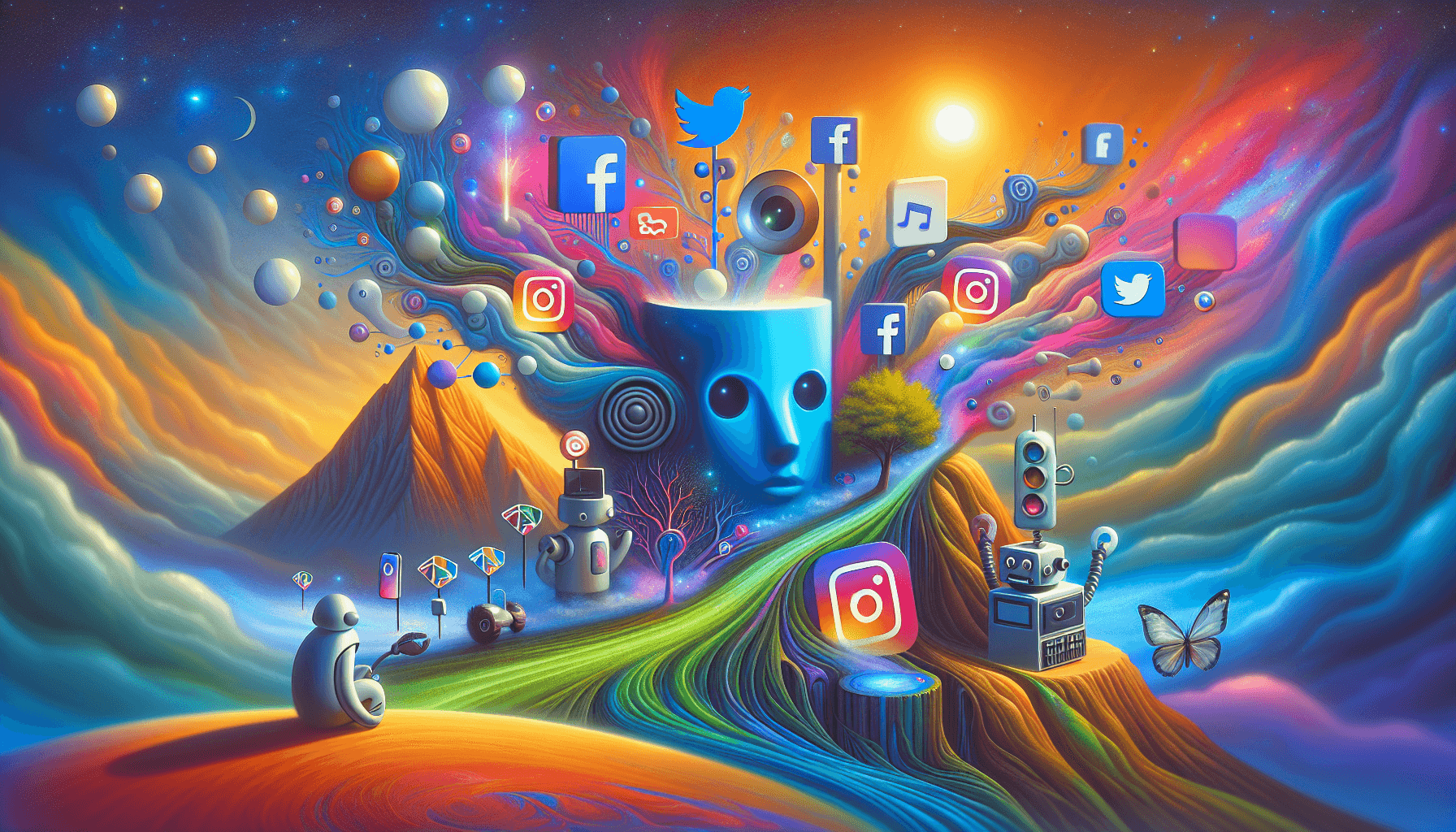
Introduction
Welcome to the future of customer engagement, where chatbots and social media marketing converge to create unrivaled experiences for small and medium-sized enterprises (SMEs). Today's digital marketing landscape is more vibrant and complex than ever before. For SMEs and CEOs looking to stay ahead of the curve, integrating chatbots into social media strategies is not just an option; it's a necessity. As technology evolves, so does consumer expectation, and chatbots stand at the forefront of this evolution. With statistics showing that about 80% of companies will be using chatbots by the end of the year and social media usage among SMEs soaring, the potential is immense.
Understanding Chatbots
To leverage chatbots effectively, it's crucial to understand what they are and how they function. Chatbots are software applications that simulate human conversation. They fall primarily into two categories: rule-based and AI-powered chatbots. Rule-based chatbots operate on predefined paths and are suitable for straightforward queries. In contrast, AI-powered chatbots use machine learning and natural language processing (NLP) to provide more nuanced responses, making them ideal for complex interactions.
For SMEs, chatbots offer key functionalities such as automating customer service, managing inquiries, and even executing sales transactions. Common misconceptions about chatbots include fears of them being too impersonal or overly complicated to implement. In reality, the right chatbot can be as personable and user-friendly as you need it to be.
The Role of Social Media in Customer Engagement
Social media is an indispensable tool for SMEs aiming to build a robust brand presence. Platforms like Facebook, Instagram, Twitter, and LinkedIn are not just marketing avenues; they are direct lines of communication with your audience. These platforms serve as arenas where customer service and brand interaction unfold in real-time. For SMEs, selecting the right social media channels is crucial. While Facebook and Instagram are excellent for visual branding and customer interaction, LinkedIn offers a more professional network, ideal for B2B engagement and partnerships.
Benefits of Integrating Chatbots with Social Media Marketing
Integrating chatbots with social media marketing offers multiple advantages that can transform customer interactions. Firstly, chatbots streamline these interactions by significantly reducing response times. Nothing pleases a customer more than quick and efficient service. Chatbots also provide 24/7 availability, ensuring that no customer query goes unanswered regardless of time zones. The personalization capabilities of chatbots enhance customer experiences, tailoring responses and suggestions based on user data and interaction history.
Consider the story of an SME using a chatbot to manage customer inquiries on Instagram. By automating responses to frequently asked questions, this SME reduced response time by 75% and increased customer satisfaction, proving the undeniable value of chatbots in social media marketing.
Best Practices for Implementing Chatbots in Social Media Strategies
Successful implementation of chatbots requires a strategic approach. First, identify your chatbot goals: whether it's enhancing customer service, generating leads, or driving sales. Once you've set your objectives, it's vital to choose the right social media platform for chatbot deployment, aligning it with where your audience engages the most. Designing the chatbot conversation flow is another crucial aspect. Keep the dialogue natural and engaging, and always ensure a seamless handover to human agents when needed to maintain quality customer service.
Metrics for Measuring the Success of Chatbots in Social Media Campaigns
Evaluation of chatbot success is vital to optimizing your strategies. Key performance indicators (KPIs) such as response time, customer satisfaction scores, and engagement rates provide insight into their effectiveness. Analyzing user engagement and feedback can highlight areas needing improvement and help adjust strategies accordingly. Regular data analysis can pave the way for continuous improvement, ensuring your chatbot remains a valuable asset in your social media campaigns.
Challenges and Considerations
Alongside the benefits, integrating chatbots into social media poses challenges, including technical pitfalls and data privacy concerns. Adhering to data privacy regulations is non-negotiable, as non-compliance can lead to severe penalties. Continuous training and updating of chatbots are also necessary to keep up with evolving consumer behavior and language nuances, ensuring peak performance.
The Future of Chatbots in Social Media Marketing
The future of chatbots in social media marketing is bright, fueled by emerging trends in AI and automation. As technology advances, chatbots will become more intuitive and capable of sophisticated interactions. Predictions indicate that SMEs will increasingly rely on chatbot technology not only for marketing but also for customer analytics and enhanced personalization strategies. Staying abreast of these advancements will be critical for SMEs aiming to leverage competitive advantages.
Conclusion
In conclusion, chatbots play an instrumental role in enhancing social media marketing efforts. By improving engagement, streamlining customer service, and offering personalized experiences, they empower SMEs to achieve more with less effort. For SME owners and CEOs ready to innovate, the proactive integration of chatbots can lead to improved engagement, operational efficiency, and ultimately, business growth. Don't be left behind—explore your options and embrace chatbot technology as a core component of your marketing mix today.